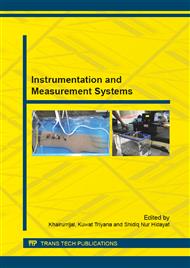p.161
p.165
p.170
p.174
p.179
p.183
p.187
p.191
p.195
Combination of Active and Passive Seismic Analyses for Embankment Characterization
Abstract:
Rayleigh wave dispersion is intensively used to determine near surface of shear wave velocity (Vs). The method has been known as non-invasive techniques which is costly effective and efficient to characterize subsurface. Acquisition of the Rayleigh wave can be approached in two ways, i.e. passive and active. Passive seismic is accurate to estimate dispersion curve in low frequency, although it is not accurate for high frequency. While active seismic is vice versa of passive seismic. The high frequency of Rayleigh wave dispersion reflects to near surface and vice versa. Therefore, we used the combination of both passive and active seismic method to overcome the limitations of each method. The Vs which is resulted by inversion of the combining data gives accurate model if compared to log and standard penetration test (N-SPT) data. Further, the approach has been used to characterize LUSI (Lumpur Sidoarjo) embankments. The result shows that embankment material (0-12 m) has higher Vs than that lower embankment material.
Info:
Periodical:
Pages:
179-182
Citation:
Online since:
July 2015
Keywords:
Price:
Сopyright:
© 2015 Trans Tech Publications Ltd. All Rights Reserved
Share:
Citation:


